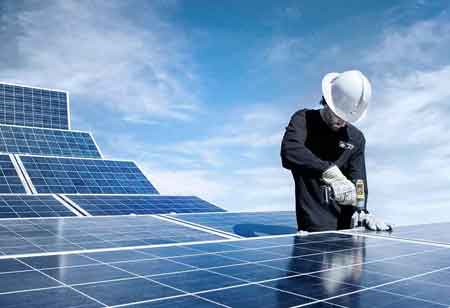Thank you for Subscribing to Energy Business Review Weekly Brief
The Use of IoT in Oil and Gas Offshore Monitoring
Producing oil and gas offshore is extremely complicated and precarious

By
Energy Business Review | Monday, May 01, 2023
Stay ahead of the industry with exclusive feature stories on the top companies, expert insights and the latest news delivered straight to your inbox. Subscribe today.
O&G companies used to heavily rely on manual data reading and visual inspection as they failed to find a cost-effective and scalable communication solution. Obviously, this is highly inefficient and error-prone, and exposes workers to significant field dangers.
Fremont, CA: Producing oil and gas offshore is extremely complicated and precarious. Oil & Gas companies have difficulty obtaining a timely and accurate picture of their ongoing production due to offshore rigs' remoteness and isolation. This can lead to asset failures and costly downtime when machine and process variables are out of specification. Furthermore, insufficient monitoring can lead to disastrous explosions that take a heavy toll on the environment, worker safety, and the reputations of companies. Internet of Things (IoT) and next-generation connectivity offer enthralling opportunities for offshore monitoring.
The Connectivity Hurdle of Offshore Rig Monitoring
O&G upstream production requires round-the-clock monitoring of numerous equipment (pipes, valves, wellheads, tanks, etc.) and parameters (temperature, vibration, pressure, flow rates, corrosion, gas leaks, etc.). Remote supervision is therefore a natural application for O&G companies. In spite of this, traditional communication solutions are too limited, expensive, or cumbersome to connect large numbers of disparate assets.
It's not possible to acquire data for remote monitoring via wired infrastructure such as SCADA systems - even though they are ideal for real-time control tasks. The middle of the ocean is unlikely to have cellular connectivity. Moreover, since oil rigs have massive sizes and complex, dense structures, setting up mesh networks is often difficult. For offshore wireless implementation, satellite connectivity has been the most popular choice because of its seamlessness and ubiquity. Because of their high costs, satellite networks are primarily used to transfer high-bandwidth voice and data, along with connecting a few high-value, critical data points.
O&G companies used to heavily rely on manual data reading and visual inspection as they failed to find a cost-effective and scalable communication solution. Obviously, this is highly inefficient and error-prone, and exposes workers to significant field dangers.
The Rise of IoT and Next-Gen Connectivity
O&G offshore monitoring is redefining possible with emerging IoT connectivity solutions like Low Power Wide Area Networks (LPWAN). The LPWAN will serve as a backbone for large-scale sensor networks, providing an inexpensive, low-bandwidth wireless link to aggregate granular telemetry data from innumerable endpoints. In large, structurally complex facilities like O&G platforms, LPWAN's simple star topology and wide range make it ideal for IoT deployments. Isolated offshore sites can benefit from a private LPWAN, which allows companies to flexibly adapt network coverage to their specific needs.
Hybrid LPWAN-satellite architectures offer O&G organizations a robust and cost-effective way to monitor and manage offshore infrastructure from hundreds of miles away. A local IoT base station aggregates data from distributed field sensors and forwards it through the LPWAN radio link to an onshore centralized command center. By combining asset, environmental, and process data, companies can gain a comprehensive picture of how their production processes are running.






